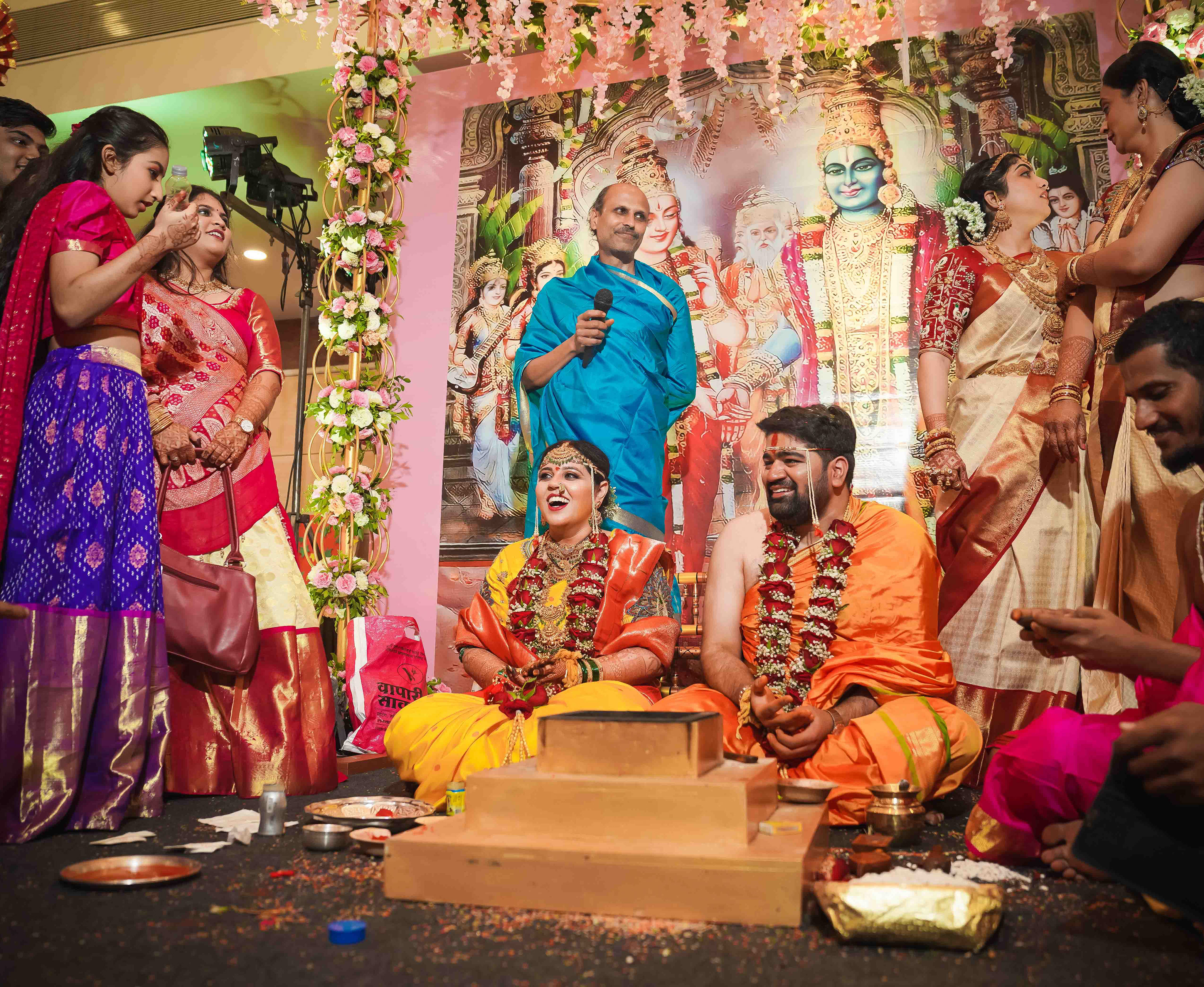
South-Indian Weddings
South-Indian Weddings
South Indian Weddings are grand events: hundreds of guests, sumptuous food, dance and music, numerous rituals, and, of course, lavish costumes. Even though many of the main rituals are common in Hindu weddings across India, South Indian wedding traditions are slightly different from those in North India. In the south too, each state, and sometimes regions within states, have their own unique rituals and traditions.
Let’s have a look at the different traditions, wedding attire and accessories followed in the five South Indian states.
Pre-Wedding South Indian Traditions
Andhra/Telangana
Pellikoduku Ceremony A couple of days prior to the wedding, the bride and groom have the Pellikuturu and Pellikoduku ceremonies, where the ladies in their families apply a paste of flour, turmeric, and aromatic oils to their bodies and bathe them in turmeric water. Most of the new generation incorporates the North Indian traditions in their wedding like Mehandi, Sangeeth, and Haldi Ceremony.
Kerala
There are minimal ceremonies in Kerala. After the alliance is accepted, the two families meet to fix the date and have an engagement ceremony where this is announced. Usually, on the previous evening, a party is held at the bride’s and groom’s house. In some communities, there is a tradition of ladies from the groom’s house going to the bride’s house with the wedding sari, blouse, and all accessories for the bride.
Tamil Nadu
The two families pray to their deities to seek blessings for the new couple a day before the wedding, either at home or in a temple. This is called panda kaal muhurtam. The bride performs a sumangali prarthana for a happy married life. Traditional designs are made with rice flour, called ‘kolam’. A cotton thread stained with turmeric is tied around the waists of the bride and groom to ward off evil. The formal engagement is done a day or so prior to the wedding, with the groom’s family coming to the bride’s home with sarees, jewellery, and other gifts.
Karnataka
The rituals and ceremonies take place over 2–3 days and have much in common with Telugu and Tamil weddings.
The Nischaya Tamulam is the official engagement ceremony, with both parents exchanging betel leaves and the bride and groom receiving gifts from their new families.
The Naandi shastra is performed in both houses, where a copper pot filled with water and a coconut placed on top is placed in the house to signify the commencement of the wedding ceremonies. The bride goes to pray at a temple with her close female relatives and offers bangles to one of them.

